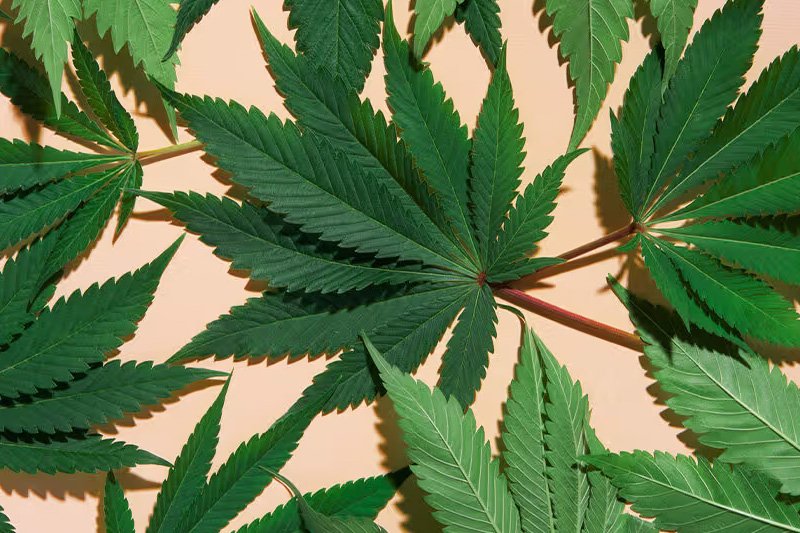Table of Contents [show]
 If you are a chronic pain sufferer, like me, you have likely tried numerous medications and therapies seeking relief. In 2024, emerging research indicates cannabis could offer a natural alternative. At Spinfuel we’ve written about pain and cannabis many times, and we write from our experiences.
If you are a chronic pain sufferer, like me, you have likely tried numerous medications and therapies seeking relief. In 2024, emerging research indicates cannabis could offer a natural alternative. At Spinfuel we’ve written about pain and cannabis many times, and we write from our experiences.
Exciting new studies can finally reveal the real science behind marijuana’s pain-relieving effects, including how Sativa, Indica, and Hybrid strains interact with receptors in the body.
My heavily researched article explores the most effective methods of cannabis consumption for pain, examining the latest evidence on smoking, edibles, tinctures, and topicals. As we analyze the data we can see clearly, and make informed decisions about utilizing cannabis to finally manage your chronic pain.
Chronic Pain: The Science Behind Cannabis as a Treatment
Studies have found that cannabis strains high in cannabinoids like CBD and THC can help reduce chronic pain. Cannabinoids bind to receptors in the endocannabinoid system, which regulates pain perception.
CBD vs. THC for Pain
CBD is non-psychoactive and acts as an anti-inflammatory, reducing the swelling that can lead to pain. (THC activates CB1 receptors, altering pain signals in the brain and spinal cord.)
Indica strains tend to always be higher in THC, while Sativa’s contain more CBD than Indica’s.
Hybrid strains provide a balance of CBD and THC, for the most part, for pain relief without ‘strong’ psychoactive effects. However, the THC can be more than enough to get you high.
Ingestion Methods: Pros and Cons
Smoking or vaping cannabis provides quick pain relief but potential minor lung irritation. Oral methods like oils, capsules, and edibles have longer-lasting effects but slower onset. Topical creams can reduce inflammation and relieve joint or muscle pain without psychoactivity. The ideal method depends on the type and severity of your pain.
The Endocannabinoid System: How Cannabis Reduces Pain
The endocannabinoid system helps regulate pain signaling. Cannabinoids like THC and CBD interact with CB1 and CB2 receptors in this system, blocking pain signals in the central nervous system and reducing inflammation in tissues.
As we indicated earlier, THC activates CB1 receptors, altering how the brain perceives pain. CBD influences CB2 receptors and acts as an anti-inflammatory. Together, THC and CBD provide significant chronic pain relief through their impact on the endocannabinoid system.
In summary, cannabis can substantially, oftentimes more than half as much as opioids, reduce chronic pain by interacting with the endocannabinoid system. Strains and ingestion methods can be tailored to your specific pain condition and needs. When used under medical guidance, cannabis is a safe and effective treatment for chronic pain.
In recreational use Cannabis states, the salesperson behind the desk is very often well-trained and knowledgeable about dozens of strains, particularly weed ‘names’, and how effective they are for certain aliments, like chronic pain or anxiety.
Which Cannabis Strains Offer the Best Pain Relief?
Studies in 2023 have found that Indica strains tend to be more effective for chronic pain relief. This has been personally verified by this author.
Indica strains can have higher levels of CBD, the cannabinoid responsible for the analgesic and anti-inflammatory effects of cannabis. In particular, the indicia hybrid strains containing both THC and CBD, such as Harlequin, ACDC, and Pennywise have shown the most promise for pain management.
Although I have experienced significant pain relief using some Indica strains with 0% CBD, I did not find any relief for inflammation.
CBD: The Key to Cannabis’ Pain-Relieving Power?
CBD interacts with receptors in the endocannabinoid system, reducing inflammation and blocking some pain signals in the nervous system. CBD also increases levels of anandamide, the body’s natural painkiller.
Many patients report CBD provides substantial pain relief without the “high” from THC. For arthritis and injury-related pain, CBD applied as a topical cream may be most effective for targeted relief from inflammation.
Ingestion Method Matters
While smoking or vaping cannabis does provide quick pain relief, the effects tend to wear off faster. Edibles and tinctures have longer-lasting effects but the relief may take longer.
For chronic pain conditions, a regimen that combines multiple methods of ingestion may work best. Start with a low dose of a high-CBD/low-THC strain and increase slowly while monitoring how well your pain is controlled and any side effects.
The research is clear that cannabis can significantly reduce both chronic and acute pain for many people. With many options for strains and ingestion methods, you can find an approach tailored to your needs and the severity of your pain.
By starting with lower dosing, and going slower than a recreational user, cannabis has been proven to be a safe and effective option for you to manage pain and improve your quality of life.
 How THC Reduces Inflammation and Pain in the Body
How THC Reduces Inflammation and Pain in the Body
The Endocannabinoid System
The human body has an endocannabinoid system that produces natural cannabinoids which bind to cannabinoid receptors in the brain and central nervous system. THC, the primary psychoactive compound in cannabis, binds to these same receptors, called CB1 and CB2 receptors.
Studies show that THC activates the CB1 receptors, which work to reduce the sensation of pain throughout the body. For chronic pain patients that are already on anti-inflammatories (a non-analgesic), high THC strains provide much needed pain relief without the concern for inflammatory issues.
Anti-Inflammatory Effects
THC, CBD, and other cannabinoids have significant anti-inflammatory effects that can help reduce chronic pain. Inflammation is a key driver of many types of pain, including arthritis and neuropathy.
THC inhibits the production and release of pro-inflammatory cytokines in the body that can cause swelling and discomfort. By blocking the inflammatory response, THC helps prevent the cascade of effects that will lead to the sensation of pain.
Pain Relief
In addition to reducing inflammation, THC has direct pain-relieving effects. It activates CB1 receptors found in the peripheral and central nervous system that modulate the transmission and perception of pain signals.
THC helps inhibit the release of neurotransmitters involved in carrying pain signals to the brain, dampening the pain at its source. It also affects the limbic system, helping to change the emotional reaction to painful stimuli.
Delivery Method – Edibles vs Smoking vs Tinctures – In Detail
The method of consuming cannabis can impact how effectively it reduces pain. Inhalation methods like smoking or vaping provide the fastest relief as the THC is absorbed into the bloodstream almost immediately.
Edibles and tinctures also work well for chronic pain but may take 30-90 minutes to take effect as the liver metabolizes the THC. Topical creams containing THC can provide localized pain relief when applied to the area of discomfort. The ideal method depends on the individual and the severity of their pain.
In summary, THC in cannabis helps reduce both inflammation and the perception of pain in the body through interactions with the endocannabinoid system and other biological mechanisms. When used properly, cannabis can be an effective treatment for many types of chronic pain conditions.
Most Effective Methods of Consuming Cannabis for Pain Relief
Inhalation of Cannabis Flower or Extracts
Inhaling cannabis by smoking dried flower or vaporizing cannabis extracts has been shown to provide rapid relief from chronic pain. Studies indicate cannabis inhalation results in peak THC plasma concentrations within 3 to 10 minutes after consumption, allowing for quick absorption of cannabinoids into the bloodstream and interaction with cannabinoid receptors involved in pain modulation.
Both Indica and Sativa strains can provide pain relief, depending on the individual and the severity of the pain.
Oral Consumption of Cannabis Oils and Edibles
Consuming cannabis orally, whether through ingestion of oils, tinctures, capsules, or edibles, results in slower absorption of cannabinoids but longer-lasting effects. Oral consumption leads to peak THC plasma levels within 1 to 2 hours. For chronic pain conditions requiring relief for extended periods, oral consumption may be preferable.
Studies show some patients experience up to 6-8 hours of pain relief from a single dose of cannabis oil. Both THC and CBD-dominant oils and edibles have demonstrated efficacy for pain management.
Topical Application of Cannabis Creams and Balms
Cannabis-infused topicals, such as creams, balms, and lotions, have gained popularity as an alternative method for localized pain relief. While transdermal absorption of cannabinoids is limited, cannabis creams may help reduce inflammation in joints and muscles, easing arthritis pain, injury-related inflammation, and muscle spasms.
Topicals allow for targeted relief without the psychoactive effects of other consumption methods. Studies indicate cannabis creams may provide 3 to 6 hours of pain relief when applied to the affected area.
In summary, by understanding the differences in cannabinoid absorption and duration of effects between inhalation, oral ingestion, and topical application, patients can determine the most effective and tailored approach to managing their pain.
Continued research on specific cannabis strains, cultivars, and products will enable more customized chronic pain treatment plans utilizing this versatile medicinal plant.
Conclusion
You should now have a decent understanding of how cannabis can effectively reduce chronic pain. The latest research clearly shows that cannabinoids in marijuana strains can relieve pain and inflammation through their interaction with the body’s endocannabinoid system.
Hybrid strains with a balance of THC and CBD seemingly offer the greatest therapeutic benefits. While smoking and vaping allow fast relief, edibles and tinctures provide longer-lasting effects.
As more states legalize medical and recreational marijuana, cannabis offers a promising alternative or supplement to opioids for chronic pain sufferers. Consult with your healthcare provider to see if medical cannabis is appropriate for managing your condition. Used responsibly under medical guidance, cannabis can greatly improve quality of life.
Other Cannabis and Pain Articles in Spinfuel:
Powerful Cannabis Strains and Inflammation Relief for 2024
The Cannabis Business – 4 Tips to Help You Grow and Expand
Why Should You Get Into Hybrid Strains?
Weed in Wonderland: Unlocking the Benefits of Cannabis for Restful Sleep




